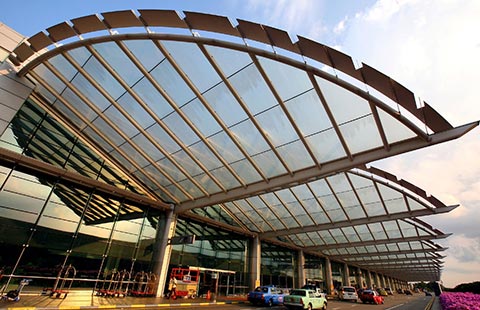A boom in bonded warehouses
By Emma Gonzalez and Shi Baoyin (China Daily) Updated: 2015-12-11 09:56
Improvements in the logistics and supply systems in the cross-border e-commerce industry are becoming crucial for the development of this expanding market, as the number of bonded warehouses rise in China.
Last year, State-owned Henan Bonded Logistic Center started operating in the city of Zhengzhou, part of a pilot pro-gram promoted by the Chinese government to create import and export logistics platforms to deal with the outstanding order volumes generated by the country's e-commerce industry.
Its bonded warehouse, equivalent to 77 standard soccer fields, has become a crucial part of the country's booming cross-border e-commerce industry and have stored 3.4 billion yuan ($528 million) worth of imported goods this year, mostly cosmetics and food products.
Zhengzhou was chosen to participate in the pilot program because of its strategic location in Central China, and it is easily accessible by regular train and flight connections. Additionally, the city's airport created a special e-commerce zone for the import of foreign goods.
The advantage of the center lies on having established its own customs center and quarantine, inspection and duty offices to ease trade procedures for the around 1,000 companies using the bonded warehouse.
Additionally, the fiscal benefits of the center are allowing online customers to save money with their purchases of imported goods. According to local tax regulations, each order worth under 500 yuan is duty-free while each order above 500 yuan incurs duty of 10 percent or more.
In only two years, eight cities across China, including Shanghai, Hangzhou, Ningbo, Guangzhou, Shenzhen and Chongqing, have built similar centers. The rapid creation of these massive warehousing and distribution platforms reflects the increasing importance that cross-border e-commerce has for the Chinese economy.
The Ministry of Commerce forecasts that cross-border e-commerce will be worth 6.5 trillion yuan in 2016, accounting for 20 percent of the country's total foreign trade.
China's total cross-border e-commerce - inbound and outbound-will reach 5.5 trillion yuan this year, compared to 4.2 trillion yuan in 2014, according to the China E-commerce Research Center.
At the logistics platform in Zhengzhou, which dealt with around 40 million parcels and generated a turnover of 33.07 million yuan in the first 11 months of the year, there are no signs of the e-commerce craze slowing down, with more Chinese consumers becoming increasingly interested in purchasing imported products at competitive prices.
"It is a crucial time for the industry now. Only five years ago, China's logistics system was clearly lagging behind," said Xu Ping, general manager of HBLC. "Nowadays, we are much more experienced in this industry than our European counterparts. However, the industry still needs to make more investments to deal with the higher volumes".
Chinese netizens are expected to spend 1 trillion yuan in purchases of overseas goods in 2018, compared with expenditure of 140 billion yuan on imported products in 2014, according to the China E-commerce Research Center.
- Key issues involved in the IPO reforms
- Registration system for floats to boost bourses
- Yutong trialing green buses in Paris
- CREG sets sights overseas
- Hamburg rail link to see more freight traffic
- Cartier's new boss must put the sparkle back in watches
- Stocks fall on growth concerns
- Reaping the rewards of a good decision

















